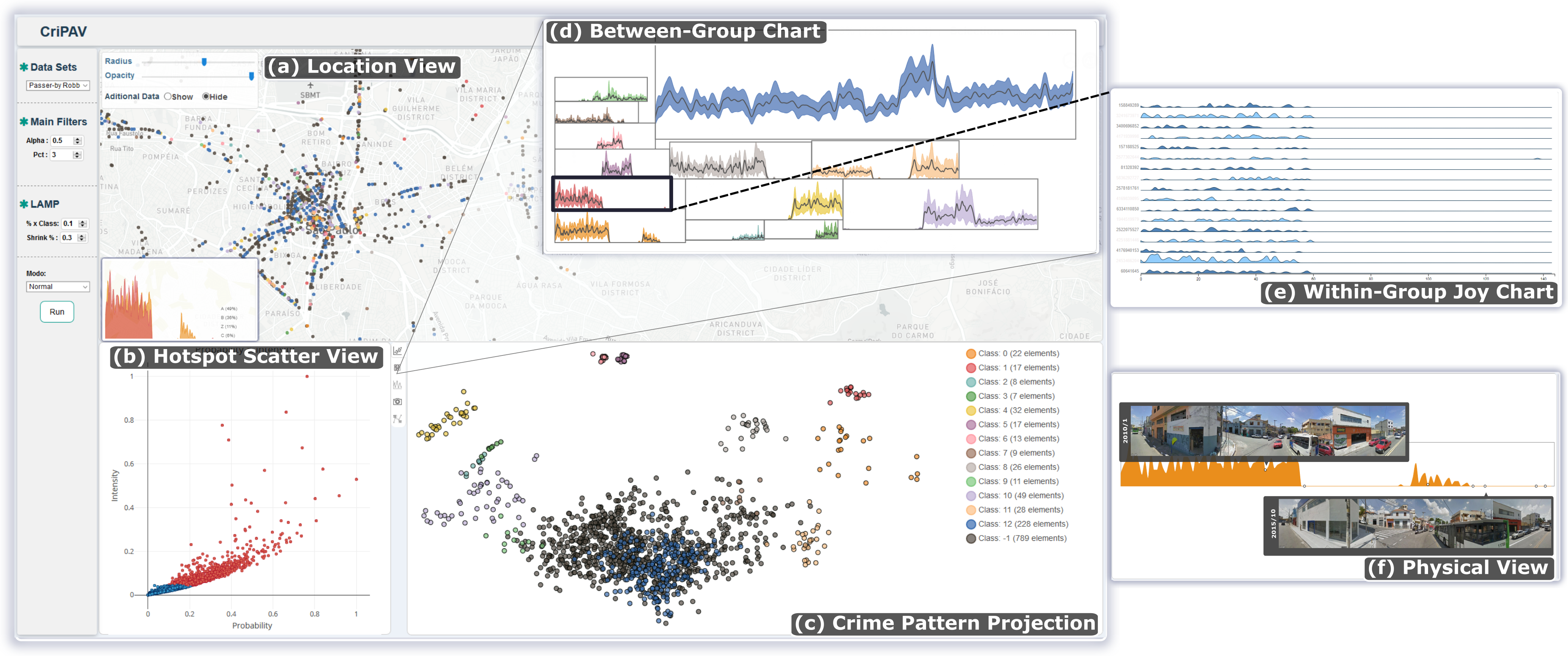
Abstract
Extracting and analyzing crime patterns in big cities is a challenging spatiotemporal problem. The hardness of the problem is linked to two main factors, the sparse nature of the crime activity and its spread in large spatial areas. Sparseness hampers most time series (crime time series) comparison methods from working properly, while the handling of large urban areas tends to render the computational costs of such methods impractical. Visualizing different patterns hidden on crime time series data is another issue in this context, mainly due to the number of patterns that can show up from the time series analysis. In this paper, we present a new methodology to deal with the issues above, enabling the analysis of spatiotemporal crime patterns in a street-level of detail. Our approach is made up of two main components designed to handle the spatial sparsity and spreading of crimes in large areas of the city. The first component relies on a stochastic mechanism from which one can visually analyze probableXintensive crime hotspots. Such analysis reveals important patterns that can not be observed in the typical intensity-based hotspot visualization. The second component builds upon a deep learning mechanism to embed crime time series in Cartesian space. From the embedding, one can identify spatial locations where the crime time series have similar behavior. The two components have been integrated into a web-based analytical tool called CriPAV (Crime Pattern Analysis and Visualization), which enables global as well as a street-level view of crime patterns. Developed in close collaboration with domain experts, CriPAV has been validated through a set of case studies with real crime data in São Paulo - Brazil. The provided experiments and case studies reveal the effectiveness of CriPAV in identifying patterns such as locations where crimes are not intense but highly probable to occur as well as locations that are far apart from each other but bear similar crime patterns.
BibTeX
@article{2021-CriPAV,
title = {CriPAV: Street-Level Crime Patterns Analysis and Visualization},
author = {Germain García-Zanabria AND Marcos Medeiros Raimundo AND Jorge Poco AND Marcelo Batista Nery AND Claudio T. Silva AND Sergio Adorno AND Luis Gustavo Nonato},
journal = {IEEE Transactions on Visualization and Computer Graphics},
year = {2021},
volume = {28},
number = {12},
pages = {4000--4015},
url = {http://www.visualdslab.com/papers/CriPAV},
}